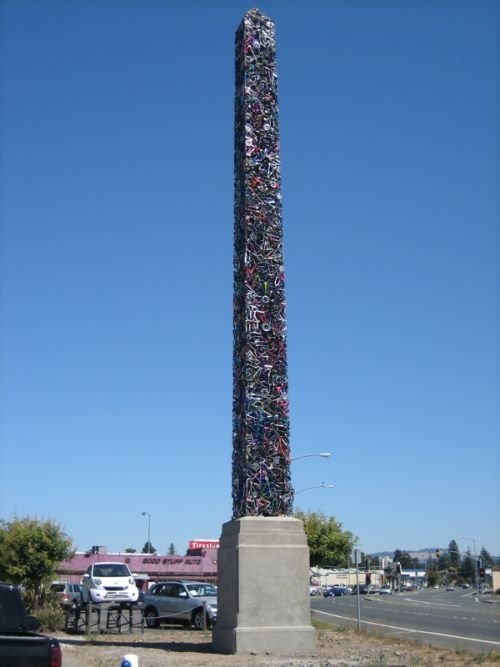|
|
Bicycle Obelisk By Mark Grieve And Ilana Spector
|
Rome is the obelisk capital of the world. The most prominent is the 25.5 m/83.6 ft high 331 ton obelisk at Saint Peter's Square in Rome. The obelisk had stood since AD 37 on its site on the wall of the Circus of Nero, flanking St Peter's Basilica:
"The elder Pliny in his Natural History refers to the obelisk's transportation from Egypt to Rome by order of the Emperor Gaius (Caligula) as an outstanding event. The barge that carried it had a huge mast of fir wood which four men's arms could not encircle. One hundred and twenty bushels of lentils were needed for ballast. Having fulfilled its purpose, the gigantic vessel was no longer wanted. Therefore, filled with stones and cement, it was sunk to form the foundations of the foremost quay of the new harbour at Ostia."
Re-erecting the obelisk had daunted even Michelangelo, but Sixtus V was determined to erect it in front of St Peter's, of which the nave was yet to be built. He had a full-sized wooden mock-up erected within months of his election. Domenico Fontana, the assistant of Giacomo Della Porta in the Basilica's construction, presented the Pope with a little model crane of wood and a heavy little obelisk of lead, which Sixtus himself was able to raise by turning a little winch with his finger. Fontana was given the project.
The obelisk, half-buried in the debris of the ages, was first excavated as it stood; then it took from April 30 to May 17, 1586 to move it on rollers to the Piazza: it required nearly 1000 men, 140 carthorses, 47 cranes. The re-erection, scheduled for September 14, the Feast of the Exaltation of the Cross, was watched by a large crowd. It was a famous feat of engineering, which made the reputation of Fontana, who detailed it in a book illustrated with copperplate etchings, Della Trasportatione dell'Obelisco Vaticano et delle Fabriche di Nostro Signore Papa Sisto V (1590), which itself set a new standard in communicating technical information and influenced subsequent architectural publications by its meticulous precision. Before being re-erected the obelisk was exorcised. It is said that Fontana had teams of relay horses to make his getaway if the enterprise failed. When Carlo Maderno came to build the Basilica's nave, he had to put the slightest kink in its axis, to line it precisely with the obelisk.
|
|









